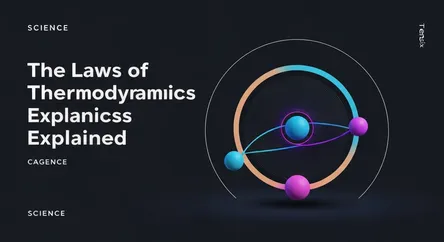Science
The Laws of Thermodynamics Explained

A concise explanation of the four laws of thermodynamics, their importance, and how they impact energy, technology, and everyday life.
What is it?
The laws of thermodynamics are a set of fundamental scientific principles that define physical quantities like temperature, energy, and entropy. They govern how energy is transferred as heat and work. There are four main laws. The Zeroth Law deals with thermal equilibrium, stating that if two systems are each in equilibrium with a third, they are in equilibrium with each other. The First Law is the principle of energy conservation: energy cannot be created or destroyed, only converted from one form to another. The Second Law introduces entropy, stating that the total disorder (entropy) of an isolated system always increases over time, meaning energy transfers are never perfectly efficient. The Third Law states that the entropy of a perfect crystal approaches zero as its temperature approaches absolute zero.
Why is it trending?
These century-old laws remain foundational to modern science and technology. Their principles are central to addressing global challenges like energy efficiency and climate change. Research in fields like quantum computing, materials science, and renewable energy relies heavily on thermodynamic principles to develop new technologies. Scientists are exploring quantum thermodynamics, which studies heat and energy at the atomic level, potentially revolutionizing computing and energy conversion. The constant drive for more efficient engines, power plants, and sustainable energy sources ensures that thermodynamics remains a critical and evolving field of study.
How does it affect people?
The laws of thermodynamics govern countless aspects of daily life. Refrigerators and air conditioners operate based on the Second Law, moving heat from a cooler space to a warmer one. All vehicles with combustion engines—cars, planes, ships—are practical applications of thermodynamic cycles. In biology, these laws explain how our bodies convert food into energy for metabolism and movement, a process that is inherently inefficient, releasing heat. Even simple occurrences, like an ice cube melting in a drink or a hot cup of coffee cooling down, are direct demonstrations of energy transfer and increasing entropy in action.